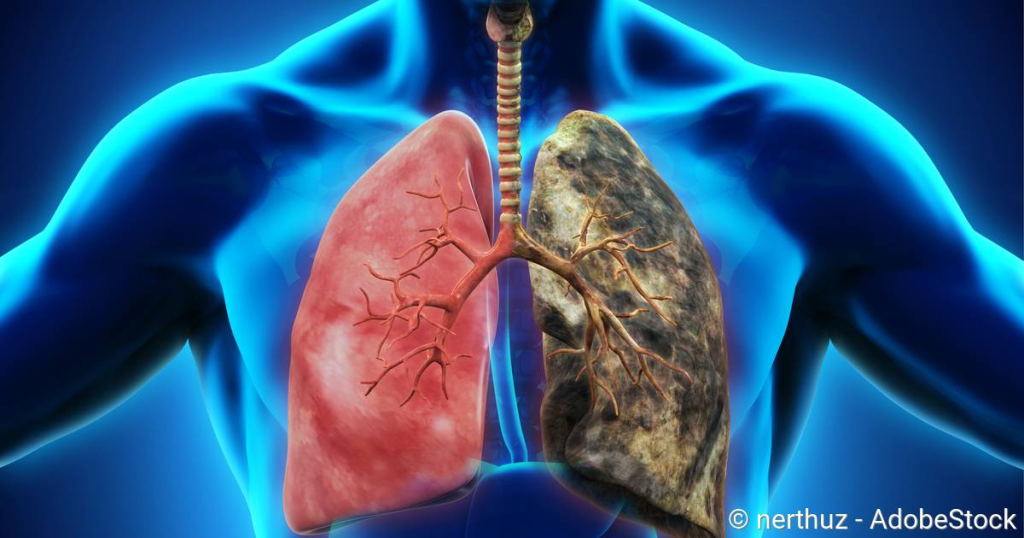Take a deep breath in, and slowly let it out. For most of us, this is an effortless, unconscious act. But for millions of people living with COPD, this simple action is a daily struggle.

COPD, or Chronic Obstructive Pulmonary Disease, is a common, preventable, and treatable disease that makes it hard to breathe. It’s not a single disease but an umbrella term used to describe a group of progressive lung conditions. The two most common are chronic bronchitis and emphysema.
- Chronic Bronchitis: This involves a long-term cough with mucus. The airways (bronchial tubes) become inflamed and produce a lot of mucus, which blocks the airflow.
- Emphysema: This condition slowly damages the air sacs (alveoli) in the lungs. These sacs are where oxygen enters the blood and carbon dioxide leaves. When they are damaged, they lose their elasticity, like an old rubber band, trapping stale air in the lungs and making it difficult to take in fresh air.
Most people with COPD have a combination of both.
The Main Cause: What Damages the Lungs?
The primary cause of COPD in the vast majority of cases is long-term exposure to irritants that damage the lungs and airways.
- Tobacco Smoking: This is the number one risk factor. Cigarette smoke, pipe smoke, and secondhand smoke are all major contributors.
- Environmental Factors: Exposure to heavy air pollution, chemical fumes, dust, or smoke from burning fuel for cooking and heating in poorly ventilated homes can also cause COPD.
While less common, a genetic condition called Alpha-1 Antitrypsin Deficiency can also cause COPD, especially in people who develop it at a younger age or have never smoked.
Recognizing the Signs and Symptoms
COPD symptoms often develop slowly and worsen over time. Many people mistake their early symptoms for signs of “getting older” or being “out of shape.” Key symptoms include:
- A persistent cough (often called a “smoker’s cough”) that produces a lot of mucus.
- Shortness of breath, especially during physical activities.
- Wheezing (a whistling or squeaky sound when you breathe).
- Chest tightness.
- Frequent respiratory infections, like colds or the flu.
- Lack of energy and fatigue.
As the disease progresses, shortness of breath can occur even during simple tasks like getting dressed or preparing a meal.
How is COPD Diagnosed and Managed?
If you experience these symptoms, it’s crucial to see a doctor. The key diagnostic test is simple and painless: Spirometry. You blow into a tube connected to a machine (a spirometer) that measures how much air you can exhale and how fast you can blow it out.
While there is no cure for COPD, the disease can be effectively managed. The goals of treatment are to relieve symptoms, slow disease progression, improve quality of life, and prevent complications.
1. Lifestyle Changes: The Most Important Step
- Stop Smoking: This is the single most effective thing you can do to slow down the damage.
- Avoid Lung Irritants: Stay away from secondhand smoke, pollution, and dust.
2. Medications
- Bronchodilators (Inhalers): These are the most common medicines. They relax the muscles around your airways, helping to open them and make breathing easier.
- Steroids: Inhaled or oral steroids can help reduce inflammation in the airways.
3. Pulmonary Rehabilitation
This is a supervised program that includes exercise training, nutrition advice, and education about your disease. It teaches you how to manage your condition and stay active.
4. Oxygen Therapy
For those with severe COPD and low blood oxygen levels, using oxygen at home can help with shortness of breath and protect the heart.
5. Healthy Habits
- Get Vaccinated: Flu and pneumonia vaccines are essential to prevent serious respiratory infections.
- Eat Well and Stay Active: A healthy diet and appropriate exercise can improve your strength and endurance.
Living a Full Life with COPD
A diagnosis of COPD is life-changing, but it is not the end. With proper management, many people live for many years and enjoy a good quality of life. It’s about taking control—working with your doctor, taking medications as prescribed, staying active, and most importantly, being kind to your lungs.
If you or someone you love is experiencing symptoms, don’t wait. Talk to a healthcare professional today. Your breath is your life.
Leave a Reply